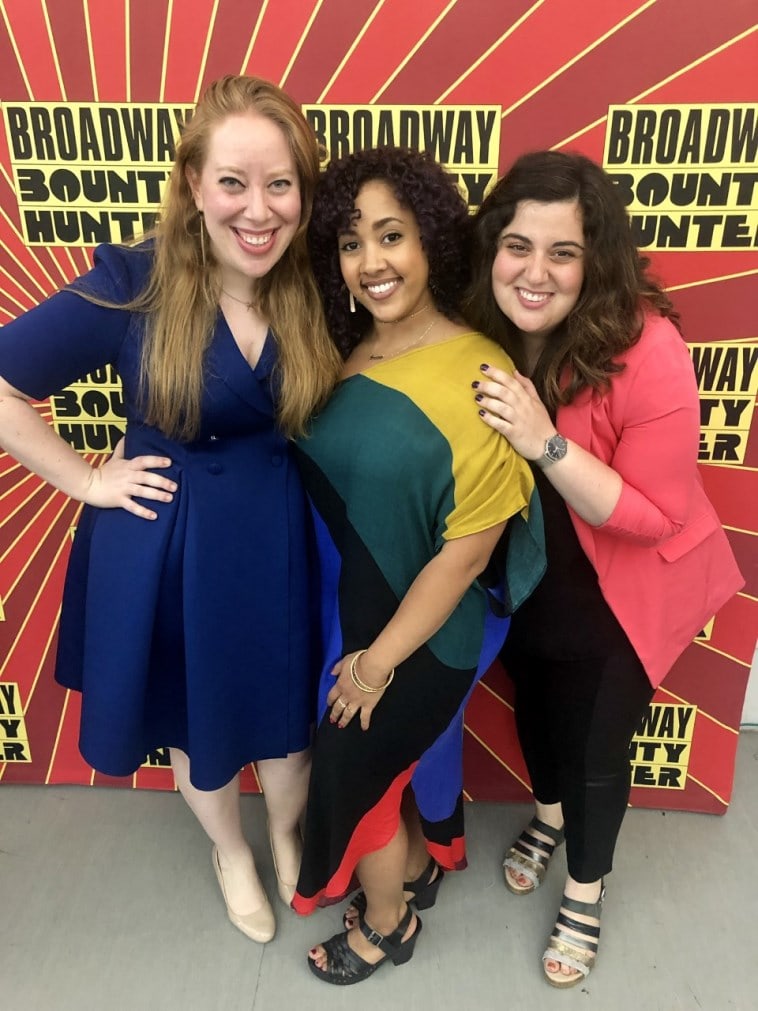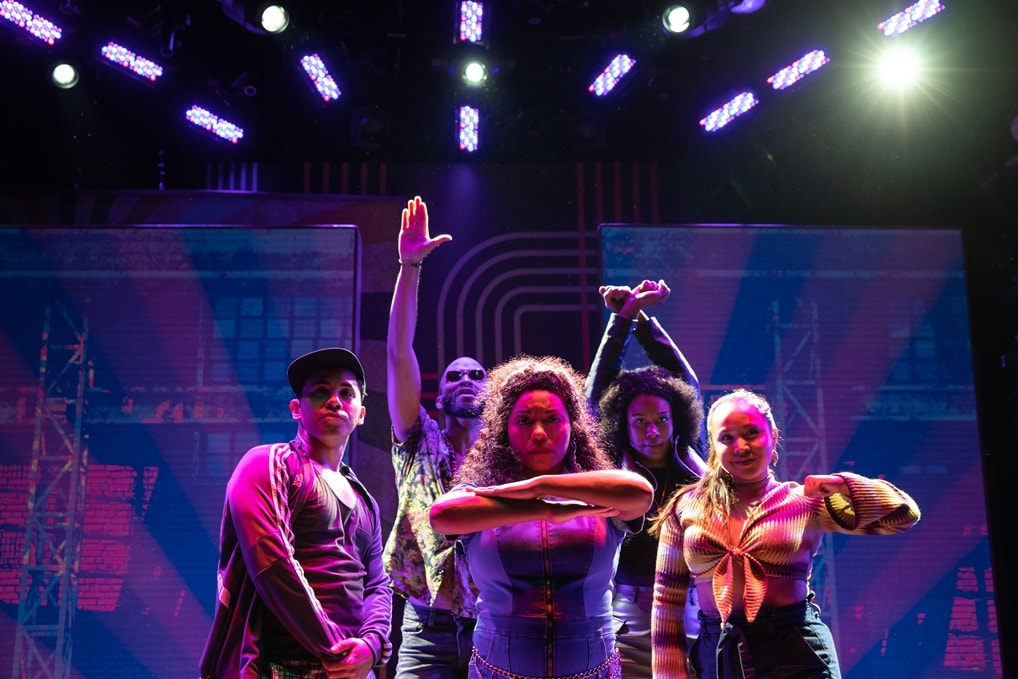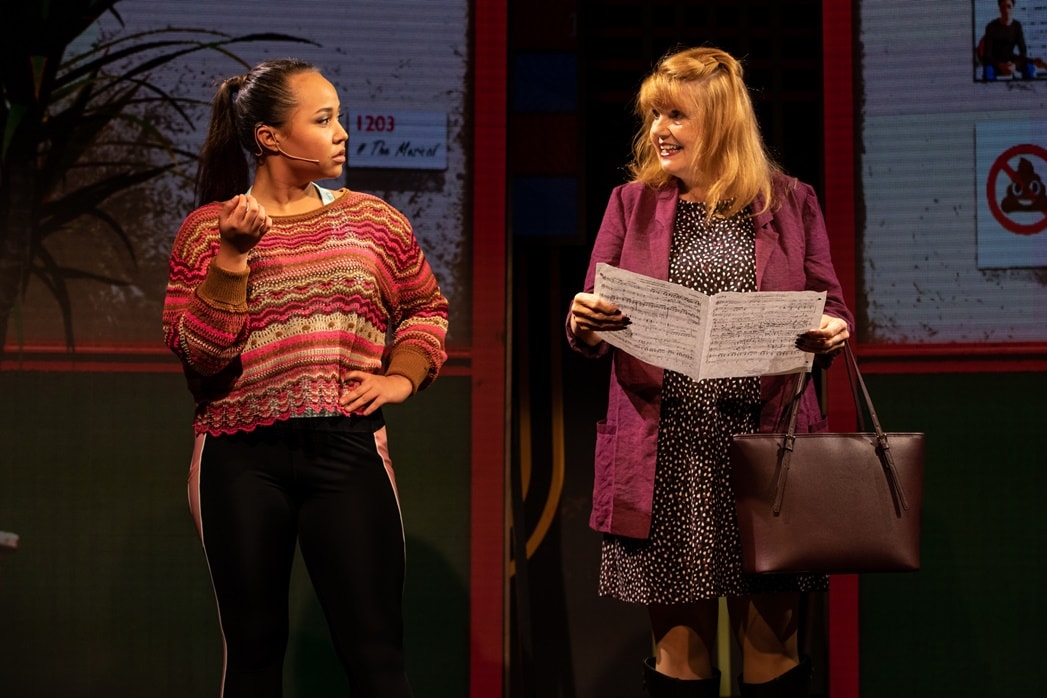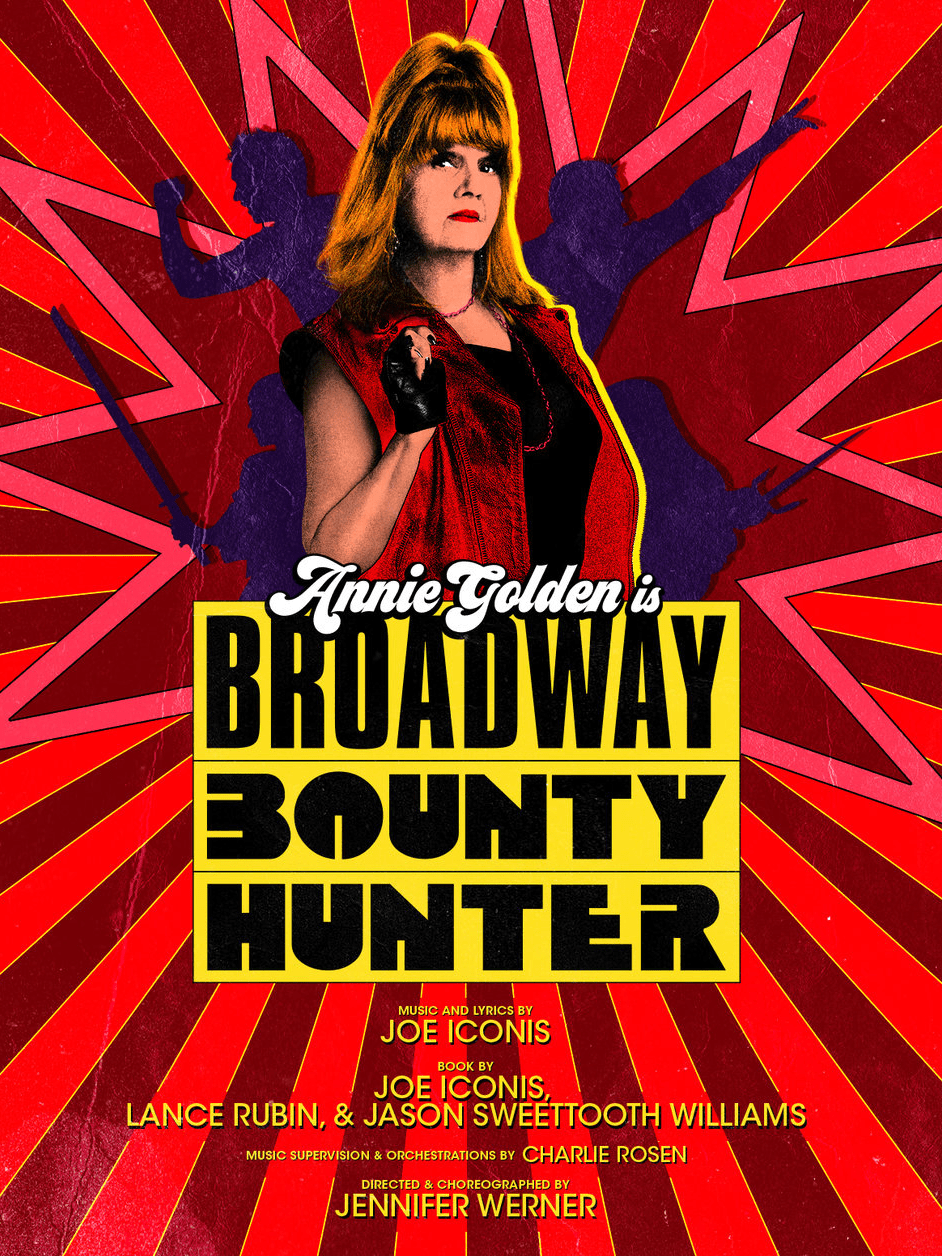Among the diverse and inclusive team working on the Off-Broadway production of Broadway Bounty Hunter, by longtime collaborators Joe Iconis, Jason SweetTooth Williams, and Lance Rubin, are two top-notch women designers who have been entrusted with creating just the right look for the female-centric action-adventure musical comedy about a “woman of a certain age” (inspired and played by Annie Golden) who makes the transition from a down-on-her-luck actress in New York to a Kung-Fu-fighting bounty hunter in South America.

During their busy tech and previews, designers Peggy Eisenhauer (lighting) and Sarafina Bush (costumes) took the time to continue the conversation we began with director/choreographer Jennifer Werner and lead producers Jennifer Ashley Tepper and Allison Bressi about their work on the show and their perspectives on it.
How did you become involved in the show and in what capacity?
PE: I was contacted by the director – the lovely Jen Werner – after we spent a few days touching up a production for touring that we both were involved with. She wanted to inquire about me becoming the lighting designer for Broadway Bounty Hunter.
SB: I’ve known one of our producers, Allison Bressi, since my very first design job after graduating college. She put me in touch with Jen Werner to discuss the chance of being the costume designer. When Jen told me about the project – a women-centered musical inspired by the blaxploitation genre – I knew I had to work on it. When else do you get an opportunity like that?!

What’s the most exciting thing about working with a large team of women on this project?
SB: They lead from a place of compassion and understand of the importance of giving women costumes that make them feel powerful. It’s never about putting their bodies on display, or trying to force these amazing performers into a pre-made mold; it’s about honoring them for their individual strengths and creating outfits and characters that fit and flatter them.
PE: The most exciting thing for me is the possibility of working as ‘authentically myself’ as ever before.

In creating your design, did you look to a particular period style or any specific source for inspiration?
SB: I watched and researched blaxploitation movies for a few months to get my head situated in the historical influence on this show. It helped me establish a tone for the look of the show, as well as set a level of camp and humor for the moments that needed it.
PE: My partner Jules [Fisher] and I have a particular specialty in creating period-specific lighting out of the most advanced technology available today. While none of the musical numbers in the show is theatrical in a ‘period performance’ sense, we did hint at the sensibility of concert lighting with respect to the musical style and musical arrangements. We supported the period rock and R&B style expressed in the musical arrangements in terms of rhythm and accents, rather than through visual composition. It’s the movement of the lighting rather than the color and shading that is more period-specific.

What aspects of the story, and of the lead character’s personality, did you find most compelling and most want to emphasize in your vision of how they should look?
SB: This story firmly believes in women being authentic to themselves. Annie’s character arc ends the show feeling proud of who she is and of her own personal strengths, though they’re very unique from the other bounty hunters. That resonated and was really important to me in designing these costumes – that every single actor’s look be unique and true to who they are.
PE: As with every production, finding the appropriate visual style of the lighting is the most important. The director used emotional words to describe each scene and Annie’s feelings and outlook, and we interpreted those emotional ideas into atmosphere and mood.
What was your creative process in terms of working with the full cast and team of the show?
PE: The work flow on this show was very quick and spirited. We had a chance to see two full rehearsals before creating lighting for each moment. Lighting designers create on demand . . . We work almost as performers in that respect! Every look has to be created and set (programmed into computers) during the rehearsals, while the actors and director wait as it is happening. It is painstaking and time-consuming and everyone was unbelievably patient throughout.
SB: Even as we got into rehearsals, the actors or Jen would come to me with things they discovered about their characters in the rehearsal room, and I’d use that as my guide to mold their outfits. For some it was small changes from the original design, but for others it meant going in a totally different direction, and that felt really right with the show. Even our swings have their own unique Bounty Hunter looks!

What separates the three male co-writers Joe Iconis, Jason SweetTooth Williams, and Lance Rubin from the mainstream patriarchy that you’d like to dropkick?
SB: They write for the “other” and actually are open to feedback from those people they’re writing about. They choose to surround themselves with collaborators who can speak to their experiences, and that gives their stories a deeper level of authenticity and lends a voice to those who might otherwise be brushed aside.
PE: When these three brilliant talents can invest their creative expression, of a piece this dynamic and powerful, to the sensibility of a woman artist/director, we see them as altering the creative/commercial pipeline.
Have you seen any significant changes in the system over the course of your career? What issues still need to be addressed?
PE: The establishment and discussion of the anti-harassment policy among theater companies, and the open discussion of what harassment can look like in the workplace, are big changes in the industry over the course of my career. They have definitely made a difference in behavior – for the better.
SB: I’ve seen an increasing number of women on creative teams, though too often it’s still only the assistants. I’ve been fortunate enough to have collaborated with people who’ve valued women on the team since I started, but we need more women of color behind the tech tables. There are several of us making our way, especially in costume design, hair, and makeup, but we need more in the other departments, as well.

What’s the main message you want to send with this new female-centric work and what do you hope audiences enjoy most about it?
SB: One of the things I enjoy so much about this show is that it is feminist and female-centric without knocking any other group. I hope the audience comes away from the show remembering that by calling oneself feminist, it doesn’t mean believing that anyone else is less than, or is our enemy. It believes in empowering all people and making space at the table for any and all allies, whether they are women, people of color, or LGBTQIA+.
PE: My hope is that the audience falls in love with our characters and with our star Annie Golden . . . and with my favorite sentiment that finding courage, authenticity, and love at any age is possible, because that is something truly meaningful to believe in.
Thank you so much, Peggy and Sarafina, for a behind-the-scenes look at the design elements of Broadway Bounty Hunter and what being a part of its terrific team means to you!
Broadway Bounty Hunter plays through Sunday, August 18, 2019, at the Greenwich House Theater – 27 Barrow Street, NYC. For tickets, go online.





